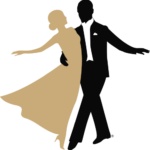As we age, maintaining physical and mental health becomes increasingly important for a fulfilling and vibrant life. While many forms of exercise are available, dance stands out as a joyful and holistic approach to improving the overall well-being of the elderly. In this blog, we’ll explore the numerous ways in which dance can have a positive impact on elderly health, fostering a sense of vitality, social connection, and emotional well-being.
Enhanced Physical Fitness
Dance is a dynamic and enjoyable way for the elderly to improve their physical fitness. It involves a combination of cardiovascular activity, strength training, and flexibility exercises. Regular dance sessions can help seniors increase their stamina, muscle strength, and balance, reducing the risk of falls and injuries.
Improved Balance and Coordination
Falls can be a significant concern for the elderly, leading to fractures and other health complications. Dance helps improve balance and coordination by requiring participants to move rhythmically and perform intricate steps. This increased awareness of body movements can enhance stability and reduce the likelihood of accidents.
Cognitive Stimulation
Dance engages both the body and the mind, making it a valuable activity for cognitive health. Learning and remembering dance routines, steps, and sequences challenge the brain, potentially reducing the risk of cognitive decline. This mental stimulation can help seniors maintain their cognitive abilities and memory.
Emotional Well-Being
The emotional benefits of dance for the elderly are profound. Dancing promotes the release of endorphins, which are natural mood lifters. This can lead to reduced feelings of depression, anxiety, and stress, contributing to an overall sense of happiness and well-being.
Social Connection
Participating in group dance classes or social dance events provides opportunities for social interaction and connection. Loneliness and isolation are common issues among the elderly, but dance offers a sense of belonging and companionship. It’s a chance to make new friends, share experiences, and build a supportive community.
Stress Reduction
Dance can be a therapeutic way to reduce stress and tension. The music, movement, and rhythm of dance provide a form of relaxation, helping seniors let go of daily worries and pressures. The meditative aspect of dancing can promote mental clarity and emotional resilience.
Increased Self-Confidence
As elderly individuals master dance moves and routines, they often experience a boost in self-confidence and self-esteem. The sense of accomplishment derived from learning and performing dance steps can translate into a more positive self-image.
Enhanced Creativity
Dance encourages creativity and self-expression, allowing seniors to explore their artistic side. Whether it’s through improvisation or choreography, dance provides a space for elderly individuals to express themselves and tap into their creative potential.
Stress on Joints and Bones
Dance is a low-impact exercise that places less stress on joints and bones compared to some other forms of physical activity. This makes it suitable for seniors who may have joint issues or osteoporosis. It offers a gentle yet effective way to stay active without causing excessive strain on the body.
Lifelong Enjoyment
One of the most significant advantages of dance for the elderly is its potential for lifelong enjoyment. Unlike some physical activities that become challenging with age, dance can be adapted to suit various abilities and fitness levels. It’s an activity that can be enjoyed well into the golden years, promoting a sense of grace and vitality.
Dance is a powerful tool for improving the physical, mental, and emotional health of the elderly. It enhances physical fitness, balance, coordination, and cognitive function, while also promoting emotional well-being, social connection, and creativity. So, whether you’re a senior looking to start dancing or someone supporting an elderly loved one’s journey to better health, consider dance as a delightful and effective means of promoting graceful aging and overall well-being.

